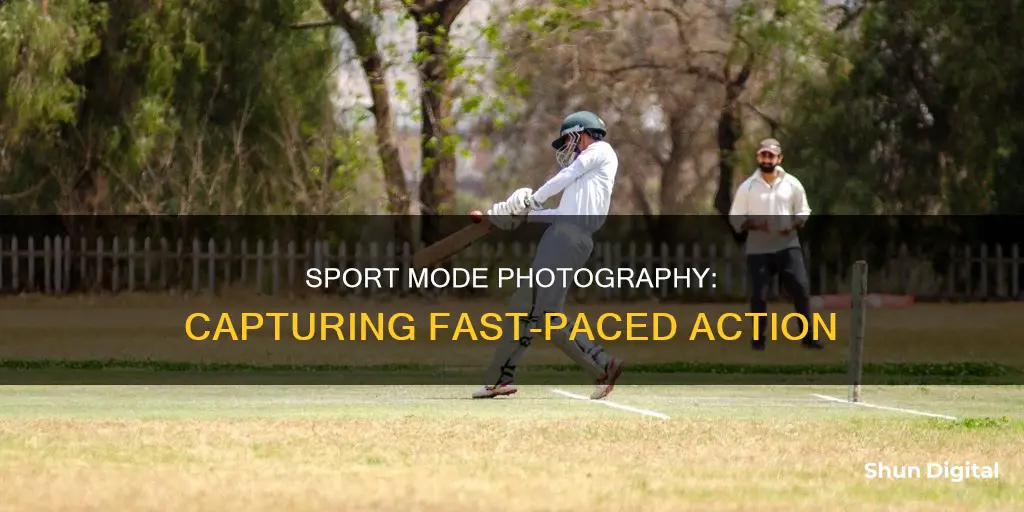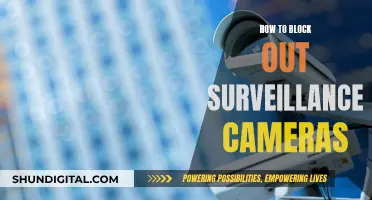
Capturing the perfect sports photo can be challenging, but with the right focus settings, you can increase your chances of getting a sharp, in-focus shot. One of the most important settings to get right is the shutter speed. A fast shutter speed is crucial to freezing motion and preventing blurry photos. The recommended shutter speed for sports photography is 1/500 or higher, depending on the speed of the action. Another important setting to consider is the aperture. By using a wide aperture, you can let in more light and create a shallow depth of field, blurring the background and bringing the athletes into sharp focus. It's also essential to use a high ISO setting to boost the exposure and allow for faster shutter speeds. Additionally, sports mode on your camera can be a helpful feature as it preconfigures various exposure and focus settings optimized for fast-action scenes. When composing your shot, it's best to keep the subject in the centre of the frame, as this increases the chances of capturing an in-focus photo. Finally, it's crucial to understand the sport you're shooting and anticipate the action to ensure you're in the right place at the right time.
| Characteristics | Values |
|---|---|
| Shutter Speed | 1/500 or faster |
| Aperture | Wide aperture (e.g. f/2.8) |
| ISO | 400 or above |
| Drive Mode | Continuous |
| Continuous Shooting Speed | Highest setting |
| Autofocus Mode | Continuous and tracking options |
| Lens | Long lens (focal length of 50mm and above) |
| Tripod | Not required |
| Composition | Keep the action near the middle of the frame |
What You'll Learn

Shutter speed
A slow shutter speed will allow more light to enter the camera, but it also increases the risk of motion blur, which is where moving elements within your image appear blurry. A fast shutter speed, on the other hand, reduces the risk of motion blur because the sensor is exposed to light for less time, freezing the action and giving you sharper shots.
The shutter speed you should use will depend on the sport you are photographing and the lighting conditions. For most sports, a shutter speed of 1/500 of a second should be fast enough, but for very fast-paced sports like motor racing, you may need to go as high as 1/1000 of a second. If you are shooting in low light conditions, you may need to use a slower shutter speed to let in more light, but be aware that this will increase the risk of motion blur.
It's worth noting that while a fast shutter speed is important for freezing the action, there are times when you may want to use a slower shutter speed to create a motion blur effect. This can be a powerful way to convey the intensity of the action and add artistic interest to your photos.
To achieve the high shutter speeds required for sports photography, you will need to use a wide aperture to let in as much light as possible. This will also give you the added benefit of a shallow depth of field, which will blur the background and help your subject stand out.
In addition to your aperture settings, you may also need to increase your ISO speed to ensure your camera is getting enough light. However, a higher ISO can introduce digital noise into your images, so it's best to use the lowest ISO setting you can while still achieving the desired shutter speed.
By mastering the use of shutter speed, aperture, and ISO, you'll be well on your way to capturing sharp and exciting sports photographs.
Is Your Webbie HD Camera Charging?
You may want to see also

Aperture
If you want to blur the background and focus on a single subject, such as an athlete, use a wide aperture. This will create a shallow depth of field and make your subject stand out. An aperture of f/4.5 or wider is a good choice for this.
On the other hand, if you're shooting a wider shot of the event, it's best to use a smaller aperture to keep the entire scene in focus. For these shots, aim for an aperture of f/8 or f/11.
It's worth noting that the aperture you choose will depend on the lighting conditions and the type of lens you're using. If you're shooting indoors or in low light, you may need to use a wider aperture to let in more light. Additionally, if you're using a zoom lens, keep in mind that the aperture is narrowest at the end of the zoom range.
When shooting sports, it's important to strike a balance between a fast shutter speed to capture sharp images and a wide enough aperture to let in sufficient light. This may require some experimentation to find the right combination of settings for the specific conditions you're shooting in.
Mastering the Camera Raw Effect for All Images
You may want to see also

ISO
When shooting sports, the ISO setting you choose is determined by the shutter speed you want to use. Generally, it is recommended to use the lowest ISO setting possible to minimise noise and maximise image quality. However, when shooting sports, you may need to increase the ISO to achieve a fast shutter speed, which is often required to freeze the action.
For example, if you are shooting in low-light conditions or at night, you will need to increase the ISO to a higher value, such as 1600, to compensate for the lack of light. In these situations, it is important to strike a balance between a high enough ISO to capture a bright image and a low enough ISO to minimise noise.
When shooting sports, it is recommended to keep the ISO as low as possible while still achieving the desired shutter speed. This may involve experimenting with different ISO settings to find the optimal balance between image brightness and noise levels. Additionally, the ISO setting may need to be adjusted depending on the lighting conditions and the type of sport being photographed.
In summary, when shooting sports, it is important to strike a balance with the ISO setting. While a low ISO is generally preferable to minimise noise, a higher ISO may be necessary to achieve the fast shutter speeds often required for sports photography. By understanding the relationship between ISO, shutter speed, and lighting conditions, you can make informed decisions to capture the best possible sports photos.
Activating Test Mode: Drop Tine Trail Camera Guide
You may want to see also

Autofocus mode
Understanding Autofocus Modes:
- Autofocus Mode (AF): This mode uses internal lens motors and advanced camera technology to automatically focus on a given subject. It is ideal for locking focus on moving targets without the need for manual adjustments.
- Manual Focus Mode (M): Manual focus mode puts control back in the photographer's hands. It is useful when autofocus makes mistakes or selects the wrong area/subject to track. It is also more reliable in low-light conditions and certain genres like astrophotography, macro, architecture, and stills.
Types of Autofocus Modes:
- Single Autofocus Mode (AF-S): This is the most basic autofocus mode. It locks the focus on the selected subject. If the subject moves, the photographer needs to refocus manually. AF-S is suitable for static subjects like portraits, macro, and architecture.
- Continuous Autofocus Mode (AF-C): This mode is perfect for moving subjects. Once focus is acquired, the camera continuously tracks the subject, even if they move within the frame. It is ideal for sports, wildlife, and action photography.
- Hybrid Autofocus Mode (AF-A): This mode automatically switches between AF-S and AF-C depending on the subject's motion. It is useful for unpredictable subjects like wildlife and children, who move in sudden bursts and then pause.
Using Autofocus Modes in Sports Photography:
When photographing sports, Continuous Autofocus Mode (AF-C) is typically the best choice. This ensures the camera can track and maintain focus on moving athletes or vehicles. Additionally, specific autofocus area modes can be used alongside AF-C to enhance performance:
- Single-Point AF Area Mode: This mode allows photographers to select a single focus point for static elements. It is useful for landscape photography or when precise focus on a specific area is required.
- Dynamic AF Area Mode: This mode uses a selected focus point and its surrounding points to keep the subject in focus if they move. It is ideal for wildlife and sports photography, allowing the camera to track subjects across the frame.
- Group AF Area Mode: Group AF is useful when photographing a group of subjects in a specific area, such as a team sport or a group of athletes together. It ensures accurate autofocus across a spread of focus points.
- Auto AF Area Mode: This fully automatic mode lets the camera decide which focus points to use. It is useful for novice photographers or situations where quick focusing on nearby subjects is needed. However, it offers less control over the focus point.
Charging Sling Studio Camera Link: A Step-by-Step Guide
You may want to see also

White balance
When shooting outdoors, your camera's automatic white balance will usually do a good job of adjusting to the light. However, when shooting indoors under artificial lighting, your camera may produce images with a noticeable greenish-yellow tint. To avoid this, you should adjust your white balance settings to fluorescent or tungsten/incandescent. Take a few test shots to check which setting looks best, or set up a custom white balance to ensure your colours are accurate.
Different types of lighting will generate different-temperature light. Sunlight and artificial lights have different temperatures, and even sunlight at different times of the day can vary in temperature. Therefore, you must adjust your white balance depending on where and when you are shooting.
The colour temperature of light is measured in Kelvins. In most digital cameras, the Kelvin scale ranges from 2500 to 10,000. Temperatures over 5000K are considered cold and blueish, while anything below 5000K is considered warm and yellowish.
When adjusting the white balance in your camera, you can either use the automatic white balance mode, semi-automatic white balance modes (presets), or manual white balance modes. The automatic mode works well in most standard situations, but you may want to use the semi-automatic or manual modes if you require more control over the result.
The semi-automatic white balance modes include settings such as tungsten, fluorescent, flash, daylight, cloudy, and shade. These presets work well in most indoor and outdoor scenarios.
The manual white balance modes include custom white balance and Kelvin mode (K). Custom white balance is commonly used by studio photographers who require extreme colour temperature accuracy. Kelvin mode is a good option for most outdoor photography, as it allows you to manually choose the Kelvin and tint values to use.
Remember that white balance can also be used creatively to add a colour cast to your images. Play around with the different white balance settings to see how they impact the look and feel of your photographs.
Unlocking RAW Image Potential: Editable Features Explained
You may want to see also
Frequently asked questions
Autofocus Continuous (AF-C) or AI Servo AF is generally recommended for sports photography to help keep moving subjects in focus.
A fast shutter speed is essential for sports photography to freeze the motion and avoid blurry photos. The shutter speed will depend on the lighting conditions and lens used but is usually 1/200s or greater.
Sports mode is typically indicated with an icon of a running person on the main mode dial. If you can't see it, consult your camera's manual or search through its internal menu options.
In addition to focus mode and shutter speed, it's important to use a high ISO setting and a wide aperture to let in more light and blur the background. It's also recommended to use continuous shooting mode or burst mode to capture multiple photos in quick succession and increase your chances of getting a sharp image.







